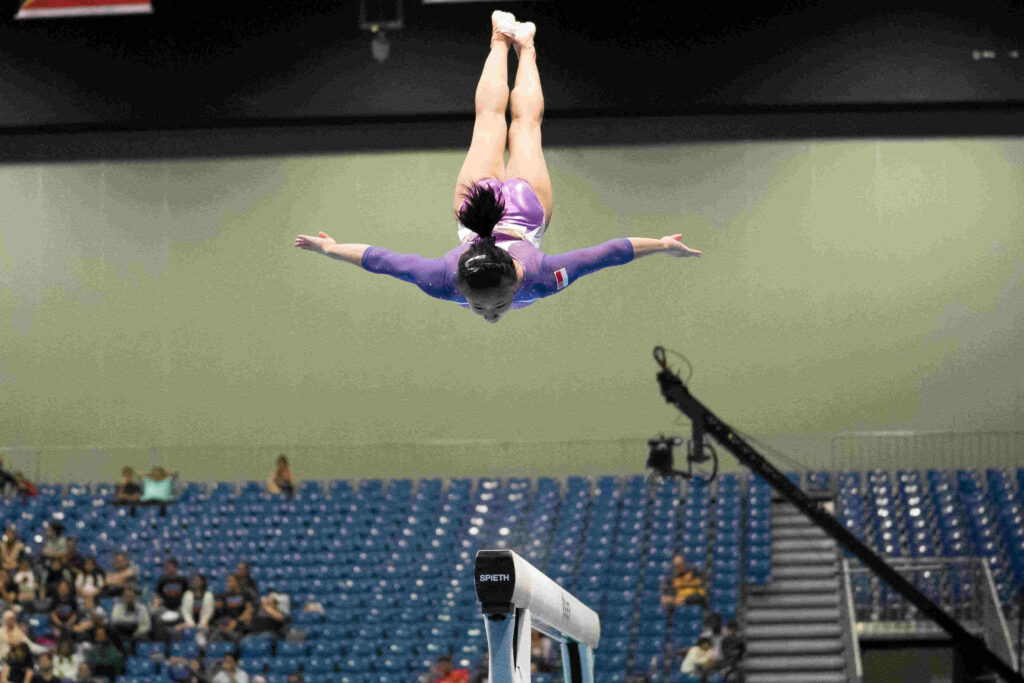Summary
Historical, physical, and cultural reasons influence why male and female gymnasts don’t compete in the same events. Over time, gymnastics has evolved differently for each gender, with men focusing more on strength and power, while women showcase a bias toward artistry. Physical differences, like body composition and strength, shape the events each gender competes. Plus, societal expectations play a big role in keeping these competitions separate, leading to distinct categories for men and women in the sport.
The divergence in events between male and female gymnasts is rooted in a complex history of cultural, physiological, and institutional factors that have shaped the sport of gymnastics over time. To understand why men and women compete on different events, we must examine the evolution of gymnastics from its origins to the present day.
Historical Development
Gymnastics has its roots in ancient Greece. When the Romans conquered Greece, they adapted gymnastics to train for military purposes.
Modern gymnastics as we know it, however, developed in the 1800’s. The sport was introduced at the first modern Olympic Games in Athens in 1896, but at that time, it was exclusively for men.
The events of the first Olympics included: vault, pommel horse, rings, parallel bars, horizontal bars, and rope climbing.
Women’s gymnastics was not included in the Olympics until 1928 in Amsterdam, and even then, it was limited to team competitions.
Early Differences in Men’s and Women’s Gymnastics
From the outset, men’s and women’s gymnastics developed along different paths:

Evolution of Women’s Gymnastics
Women’s gymnastics underwent significant changes throughout the 20th century:
- 1928-1952: Women’s Olympic gymnastics initially focused on team competitions and group routines.
- 1952 onwards: Individual events for women were gradually introduced, with the four modern events (vault, uneven bars, balance beam, and floor exercise) becoming standard by 1956.
- 1970s-1980s: The sport saw a revolution in difficulty and athleticism, spurred by gymnasts like Olga Korbut and Nadia Comăneci.
Current Events in Men’s and Women’s Gymnastics
Today, men’s and women’s gymnastics consist of different events.

Shared Events: Vault and Floor Exercise
While most events differ, men and women do share two apparatus: the vault and floor exercise.
Largely, vault is performed very similarly between Men’s and Women’s gymnastics, with differences in scoring for each sport.
However, floor exercise between men and women is quite different. Men’s routines are performed without music, and the main focus is on difficulty and execution of tumbling passes. While women also perform difficult tumbling passes, women’s routines involve music and dance and emphasize choreography.
Strangely, there was a period in the early 20th century where both men and women competed on the parallel bars. It was not long before the women began to offset the heights of the bar, creating the uneven bars.
** For more vault information, check out our articles on the hardest vaults in men’s gymnastics and the most dangerous vault ever performed.
Reasons for Continued Differences
Several factors contribute to the ongoing separation of men’s and women’s events:
- Physiological differences: Some events, like the still rings, require significant upper body strength, which generally favors male physiology. The uneven bars, on the other hand, evolved to showcase women’s flexibility and grace1.
- Historical momentum: The separate development of men’s and women’s gymnastics has created distinct traditions and expectations for each.
- Skill emphasis: Men’s gymnastics tends to focus more on strength and power, while women’s gymnastics emphasizes flexibility, balance, and artistry4.
- Equipment specialization: Over time, the apparatus for men’s and women’s events have been optimized for their respective competitions. For example, the women’s uneven bars have evolved significantly from their origins as adapted parallel bars1.
- Judging criteria: The scoring systems for men’s and women’s events have developed separately, reflecting the different skills and techniques emphasized in each.
The Debate on Event Equality
In recent years, there has been discussion about whether men’s and women’s gymnastics should become more aligned:
- Skill crossover: Some gymnasts and coaches argue that there’s no inherent reason why women couldn’t compete on traditionally male apparatus like the rings, or why men couldn’t compete on the balance beam.
- Gender equality: As other sports move towards more equal participation and opportunities for men and women, some argue that gymnastics should follow suit.
- Tradition vs. progress: Others contend that the distinct traditions of men’s and women’s gymnastics have value and should be preserved.
The Future of Gymnastics
The sport of gymnastics continues to evolve:
- Increasing difficulty: Both men’s and women’s gymnastics have seen a dramatic increase in the difficulty of skills performed, with gymnasts like Simone Biles pushing the boundaries of what’s possible1.
- Rule changes: The International Gymnastics Federation (FIG) periodically updates rules and scoring systems, which can influence the direction of the sport.
- New disciplines: The introduction of new gymnastics disciplines, such as trampoline and acrobatic gymnastics, provides opportunities for men and women to compete together or in mixed teams3.
While the core events of men’s and women’s artistic gymnastics remain distinct, the sport as a whole continues to adapt and change. The separate development of men’s and women’s events has created rich traditions and allowed for specialized skill development. However, as societal attitudes towards gender in sports continue to evolve, it’s possible that we may see further changes in how men’s and women’s gymnastics are structured and performed in the future. Ultimately, the current event structure in gymnastics reflects a complex interplay of historical development, physiological considerations, and cultural expectations. As the sport continues to evolve, it will be interesting to see how these factors shape the future of both men’s and women’s gymnastics.
Citations:
- “Gymnastics.” Wikipedia, Wikimedia Foundation, 28 Oct. 2024, en.wikipedia.org/wiki/Gymnastics.
- “Gymnastics at the 1896 Summer Olympics.” Wikipedia, Wikimedia Foundation, 28 Jan. 2024, en.wikipedia.org/wiki/Gymnastics_at_the_1896_Summer_Olympics.
- Magazine, Smithsonian. “A History of Gymnastics, from Ancient Greece to Tokyo 2020.” Smithsonian.Com, Smithsonian Institution, 26 July 2021, www.smithsonianmag.com/history/history-gymnastics-ancient-greece-tokyo-2020-180978270/.

